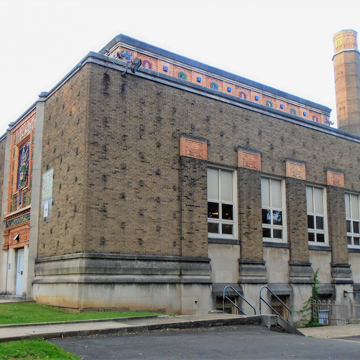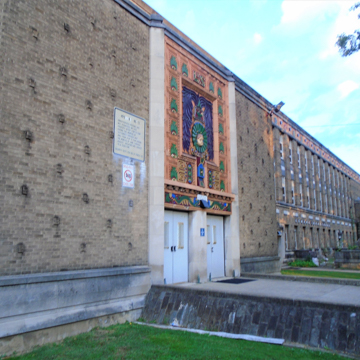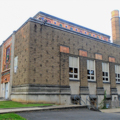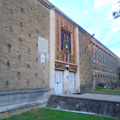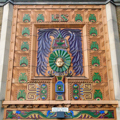This is the most successful of a number of Art Deco schools designed by Weber during Marion Steen's tenure as superintendent of buildings. Cincinnati-born architect Edward Joseph Weber (1877–1968), who trained in Boston and attended the prestigious Ecole des Beaux-Arts in Paris from 1903 to 1905, moved to Pittsburgh, where he designed many Roman Catholic buildings, most notably Central Catholic High School in 1926–1927 (4720 5th Avenue), for Link, Weber and Bowers. Weber also designed Pittsburgh's Art Deco Mifflin School (1932) at 1290 Mifflin Road for Link, Weber and Bowers, and later worked as an artistic designer for the Pittsburgh Board of Education. With Weber, Steen designed Schiller School in 1939 (1018 Peralta Street). The Lemington school's rather severe classical massing and factory brick is enlivened with vividly colored terracotta ornament representing the five human races. The three most successfully resolved Art Deco public buildings in Pittsburgh are the Lemington school, the New Granada Theater (AL120), and the old Allegheny County Airport (AL60).
You are here
Lemington Elementary School
1937, Marion M. Steen and Edward Joseph Weber. 7060 Lemington Ave., Lincoln-Lemington-Belmar
If SAH Archipedia has been useful to you, please consider supporting it.
SAH Archipedia tells the story of the United States through its buildings, landscapes, and cities. This freely available resource empowers the public with authoritative knowledge that deepens their understanding and appreciation of the built environment. But the Society of Architectural Historians, which created SAH Archipedia with University of Virginia Press, needs your support to maintain the high-caliber research, writing, photography, cartography, editing, design, and programming that make SAH Archipedia a trusted online resource available to all who value the history of place, heritage tourism, and learning.















